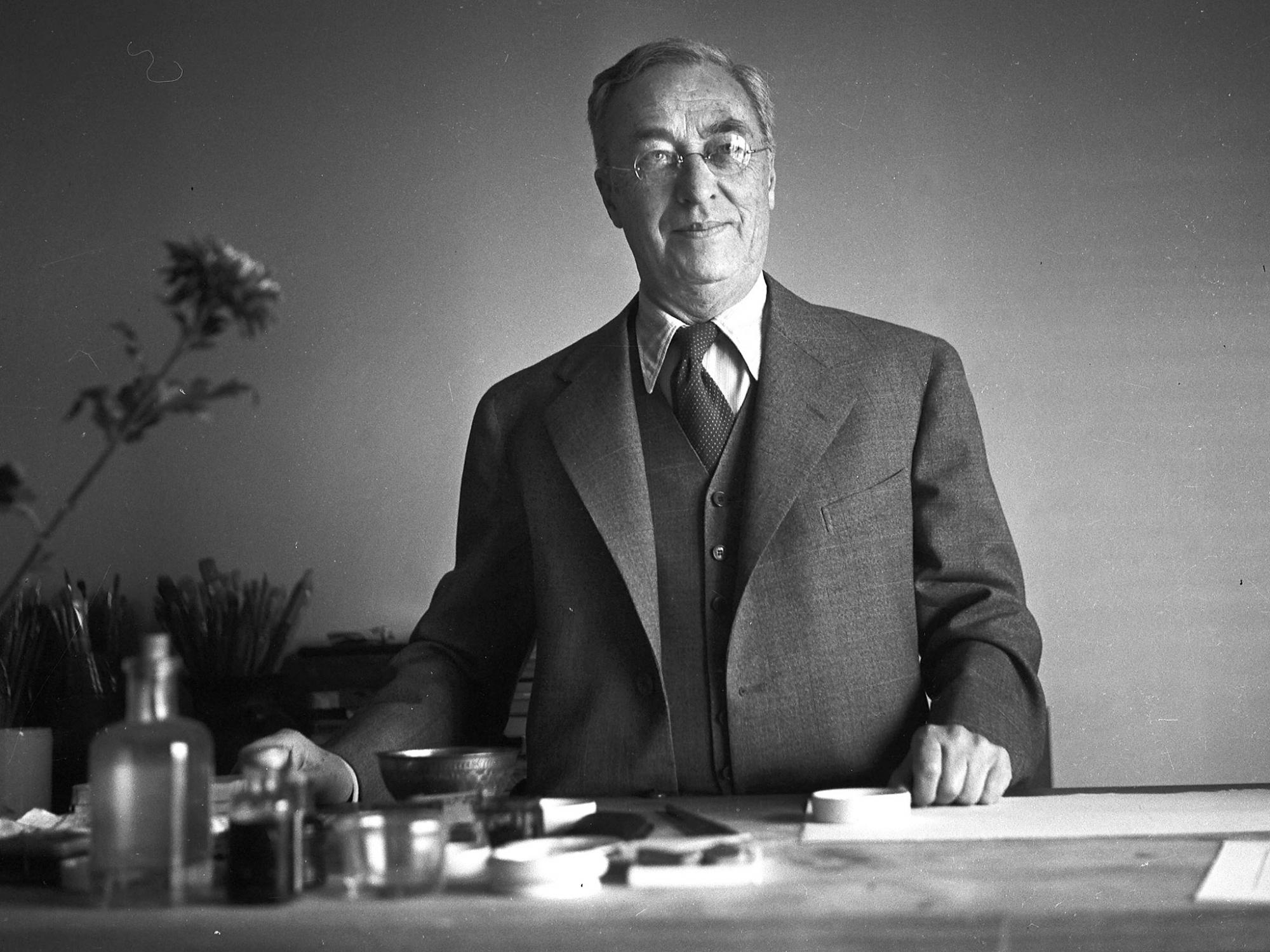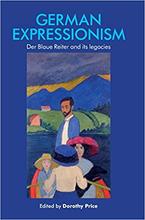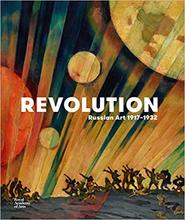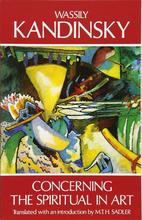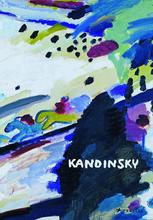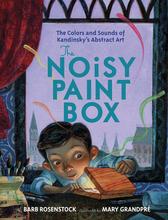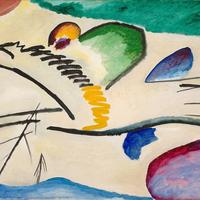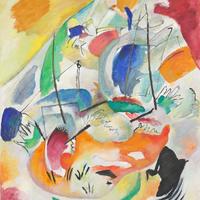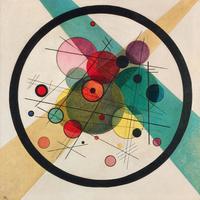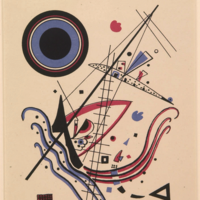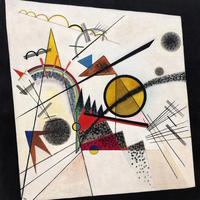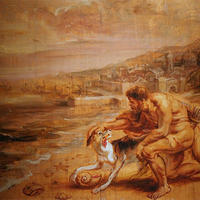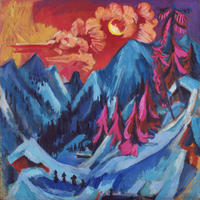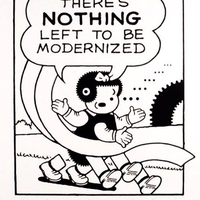More about Wassily Kandinsky
- All
- Info
- Shop
Works by Wassily Kandinsky
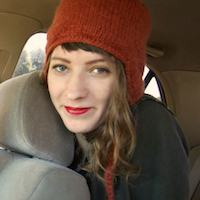
Contributor
In his youth, Wassily Kandinsky pulled what I might call a “reverse-raisin.”
He started out all dried up and boring, studying law and economics at the University of Moscow. But at the age of 30, Kandinsky was rejuvenated and became a juicy grape. Or an artist. My analogies have never been particularly strong.
Anyway, when Kandinsky decided to be an artist he wasn’t initially offered admission at any art schools (read: rejected). Despite this setback, he was not to be deterred-- Kandinsky was a pretty deep guy and drew much of his inspiration from an experience he had at a Claude Monet exhibit that year. Monet’s Haystacks reportedly brought him to tears and from that point forward, Kandinsky went full-frontal into the art world.
For Kandinsky, painting was an incredibly spiritual experience that was very much intertwined with music. He even thought of “the artist” (himself) as a prophet, as evidenced by the sh*t ton of apocalyptic paintings he did right before World War I. The Nazis were not so complimentary when World War II rolled around-- they confiscated the first three of Kandinsky’s Compositions, briefly displayed them in an exhibit called “Degenerate Art,” and then destroyed them. In light of the fact that each of these compositions took almost six months of study and preparation before he even began to put paint to the canvas, this was quite the affront.
For Kandinsky, the peak of his artistic career occurred by accident when he took a break from painting Composition IV and went for a walk. While he was out, his artist friend Gabriele Münter tidied his studio and inadvertently turned the canvas on its side. When Kandinsky returned from his stroll and saw the painting, he fell to the ground sobbing (how deep is too deep?) and proclaimed that it was the most beautiful artwork he had ever seen. The dude felt like he’d been “liberated from attachment to an object” because he was looking at it sideways. Such an artist.
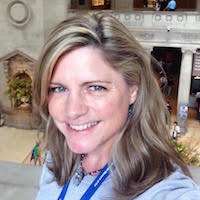
Contributor
Wassily Kandinsky didn’t need hallucinogenics
After attending a Richard Wagner concert in 1896, 30-year-old Wassily Kandinsky decided to change careers from a lawyer to an artist. I’m sure some fans claim a Beyoncé concert is life changing, but I doubt anyone is quitting their day job afterwards.
So what was so revolutionary about Herr Wagner’s music? He strived to compose a “total work of art” that included music, visuals, drama, and poetry, all at once. And he gave these works a catchy name: Gesamtkunstwerk. The idea that a work could be all encompassing inspired young Kandinsky. He said while listening, “I saw…colors…before my eyes. Wild, almost mad lines drew themselves in front of me.” If it were an EDM show, then maybe we could understand where Kandinsky was coming from. But he had no hallucinogenic assistance, instead he lived with the condition of “synesthesia” where one sense could stimulate another. For him, he could see colors while listening to music.
Kandinsky left his secure job as a law professor, packed up, and left Russia. His wife (and cousin) wasn’t so into the bohemian artist life so she went back. Kandinsky enrolled in art school in Munich to figure out how to reproduce his Wagner experience in painting where the color was the keyboard; the eyes were the hammers; and the piano, the soul. His talent was meh. But his enthusiasm was through the roof. He made friends and joined a group of artists who called themselves “Blue Rose.” He traveled to Paris and hung out with Gertrude Stein. He was entranced by Monet’s Haystacks. (I mean, who isn’t?)
He started a series of paintings he called Improvisations, inspired by musical scores. He strived to achieve the harmony of color and music, just like the colors and shapes he saw while listening to Wagner. Each painting became more and more abstract, removing any literal or symbolic references so he could closer to the “innersound.” He claimed to have created the first abstract painting.
It was 1911 when he heard the atonal music of another controversial composer, the Viennese, Arnold Schoenberg. (Atonal: the absence of key, meaning, without melody. No kidding.) Unlike Beyoncé, who makes one want to get up and dance, Schoenberg made Kandinsky get up and paint. Schoenberg and Kandinsky became friends and even formed a new club, Der Blaue Reiter (The Blue Rider). Does anyone know Beyoncé's digits? WE can form a club: The Blue Ivy! Oh…wait…
Then that same year, Kandinsky even wrote a book, Concerning the Spiritual in Art. He examined the theory of art and color and spirituality and on, and on… Globally, artists had to admire his passion.
In 1913, his work debuted to the new world for the first at the seminal International Exhibition of Modern Art in New York City—the show we now lovingly call The Armory Show. For Kandinsky, the show was a success. The photographer, collector and dealer (and George O’Keeffe’s guy), Alfred Stieglitz, purchased Kandinsky’s one painting on view, Improvisation 27 (Garden of Love II).
They say the rest is history. Kandinsky and his treatise went on to become one of the most important art documents of the twentieth century, influencing the Abstract Expressionists, Color Field Painters, Surrealists and even Beyoncé where every concert is a Gesamtkunstwerk.
Sources
- http://www.wassilykandinsky.net/
- https://www.college.columbia.edu/cct/archive/winter11/columbia_forum
- http://metmuseum.org/art/collection/search/488319
- http://www.metmuseum.org/toah/works-of-art/49.70.1/
- http://armory.nyhistory.org/i-decided-to-buy-it-alfred-stieglitz-at-the…
- https://books.google.com/books?id=jv5NB7hRJXUC&printsec=frontcover#v=on…
Featured Content
Here is what Wikipedia says about Wassily Kandinsky
Wassily Wassilyevich Kandinsky (16 December [O.S. 4 December] 1866 – 13 December 1944) was a Russian painter and art theorist active in Germany during the late Belle Époque and Interwar eras. Kandinsky is generally credited as one of the pioneers of abstraction in Western art. Born in Moscow, he began painting studies (life-drawing, sketching and anatomy) at the age of 30.
In 1896, Kandinsky settled in Munich, studying first at Anton Ažbe's private school and then at the Academy of Fine Arts. During this time, he was first the teacher and then the partner of German artist Gabriele Münter. He returned to Moscow in 1914 after the outbreak of World War I. Following the Russian Revolution, Kandinsky "became an insider in the cultural administration of Anatoly Lunacharsky" and helped establish the Museum of the Culture of Painting. However, by then, "his spiritual outlook... was foreign to the argumentative materialism of Soviet society" and opportunities beckoned in Germany, to which he returned in 1920. There, he taught at the Bauhaus school of art and architecture from 1922 until the Nazis closed it in 1933. He then moved to France, where he lived for the rest of his life, becoming a French citizen in 1939 and producing some of his most prominent art. He died in Neuilly-sur-Seine in 1944.
Check out the full Wikipedia article about Wassily Kandinsky

